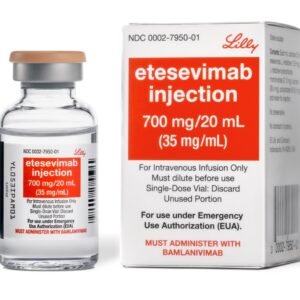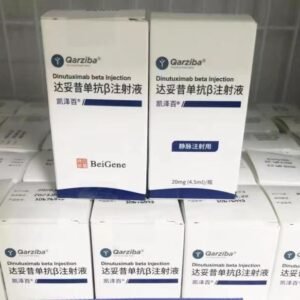Fluconazole Capsules
Effects and efficacy:
Systemic candidiasis: including candidemia, disseminated candidiasis and other forms of invasive candidal infections, such as peritoneal, endocardial, pulmonary and urinary tract infections. Cryptococcal disease: including cryptococcal meningitis and cryptococcal infections in other parts (such as lungs and skin). Mucosal candidiasis: including mucosal candidiasis of the oropharynx, esophagus, non-invasive bronchus, pulmonary candidiasis, candiduria, skin mucosa and chronic atrophic oral candidiasis, which can be used in patients with normal or impaired immune function. Acute or recurrent vaginal candidiasis. Dermatophyte diseases: including tinea corporis, tinea manuum, tinea pedis, tinea versicolor, tinea capitis, tinea unguium and other skin fungal infections. It can be used to treat pigmented fungal diseases of the skin.
Usage and dosage:
The dosage should be determined according to the nature and severity of the fungal infection. Please take the medicine as prescribed by your doctor. For infections that require multiple doses of treatment, the medication should be continued until clinical parameters or laboratory tests indicate that the active fungal infection has subsided. Insufficient treatment course may lead to recurrence of active infection. Adult dosage Cryptococcal meningitis and cryptococcal infection in other parts: The usual dose is 0.4g on the first day, and 0.2~0.4g on the next day. The course of treatment depends on the clinical and mycological response after taking the medicine, usually 6~8 weeks; after the course of treatment, 100~200mg can be given daily to prevent recurrence of meningitis; for preventing recurrence of cryptococcal meningitis in AIDS patients, the usual dose is 0.2g once a day. Candida sepsis, disseminated candidiasis and other invasive candidal infections: The usual dose is 800mg on the first day, and 400mg daily thereafter, once a day. The course of treatment also depends on the clinical response. Oropharyngeal candidiasis: 200mg on the first day, 100mg daily thereafter, once a day, for at least two weeks; for patients with severe immune impairment, the course of treatment can be extended as needed. Candida vulvovaginitis: Single dose of 0.15g, taken once. Dermatophilosis, versicolor and skin Candida albicans infection: 50 mg orally daily for 6 weeks. Preventive medication for patients with impaired immunity who are at risk of fungal infection: 400 mg daily. Other mucosal Candida infections (such as esophagitis, non-invasive bronchial infection, lung infection, candidiasis, chronic mucosal and cutaneous Candida infection, etc.): The usual dose is 50 mg once a day for 14 to 30 consecutive days. Prevention of Candidiasis: Oral 200 to 400 mg daily, once a day. Pediatric dosage (total daily dose should not exceed 400 mg) Children aged > 4 weeks: Mucosal fungal infection, 3 mg/kg body weight/day, once a day; Deep systemic fungal infection, 6 mg/kg body weight/day, once a day; Severe life-threatening infection, 12 mg/kg body weight/day, once a day; Long-term treatment of AIDS patients to suppress relapse, 6 mg/kg daily, once a day. Children aged 2 to 4 weeks: kg body weight dose as above, once every 2 days. Children <2 weeks old: The dosage per kg body weight is the same as above, and the drug is administered once every 3 days. Medication for special populations Elderly patients: Elderly patients with normal renal function do not need to adjust the dosage; patients with impaired renal function must adjust the dosage according to creatinine clearance. Patients with impaired renal function: If only one dose is required, no dosage adjustment is required; when multiple doses are required, the regular dosage should be given on the first and second days, and the dosage should be adjusted according to creatinine clearance thereafter. ① When the creatinine clearance is greater than 50ml/min, give the recommended dosage; ② When the creatinine clearance is less than 50ml/min (but not receiving dialysis), give 50% of the recommended dosage; ③ Patients who routinely receive hemodialysis are given the recommended dosage after dialysis.
Adverse reactions:
The most common adverse reactions are gastrointestinal reactions, manifested as nausea, vomiting, abdominal pain or diarrhea. More common: headache, dizziness, leukopenia, thrombocytopenia, mild rash. Less common: 5% to 7% of patients experience mild and transient elevation of alanine aminotransferase (ALT), aspartate aminotransferase (AST) and alkaline phosphatase (ALP) after taking the drug, which can be restored after reducing the dose or stopping the drug. However, patients with pre-existing serious diseases may rarely develop severe liver toxicity or even liver failure and die during medication. Extremely rare: Patients with pre-existing serious diseases may develop toxic epidermal necrolysis and Stevens-Johnson syndrome, which are more common in AIDS patients. In addition, there are rare reports of angioedema and allergic reactions.
Drug contraindications:
Allergic to this product is prohibited. It is prohibited during pregnancy. It is used with caution during lactation. It is used with caution in children.
Share:
Products
Our offers
Health Classification
Let us work together to protect precious health






























